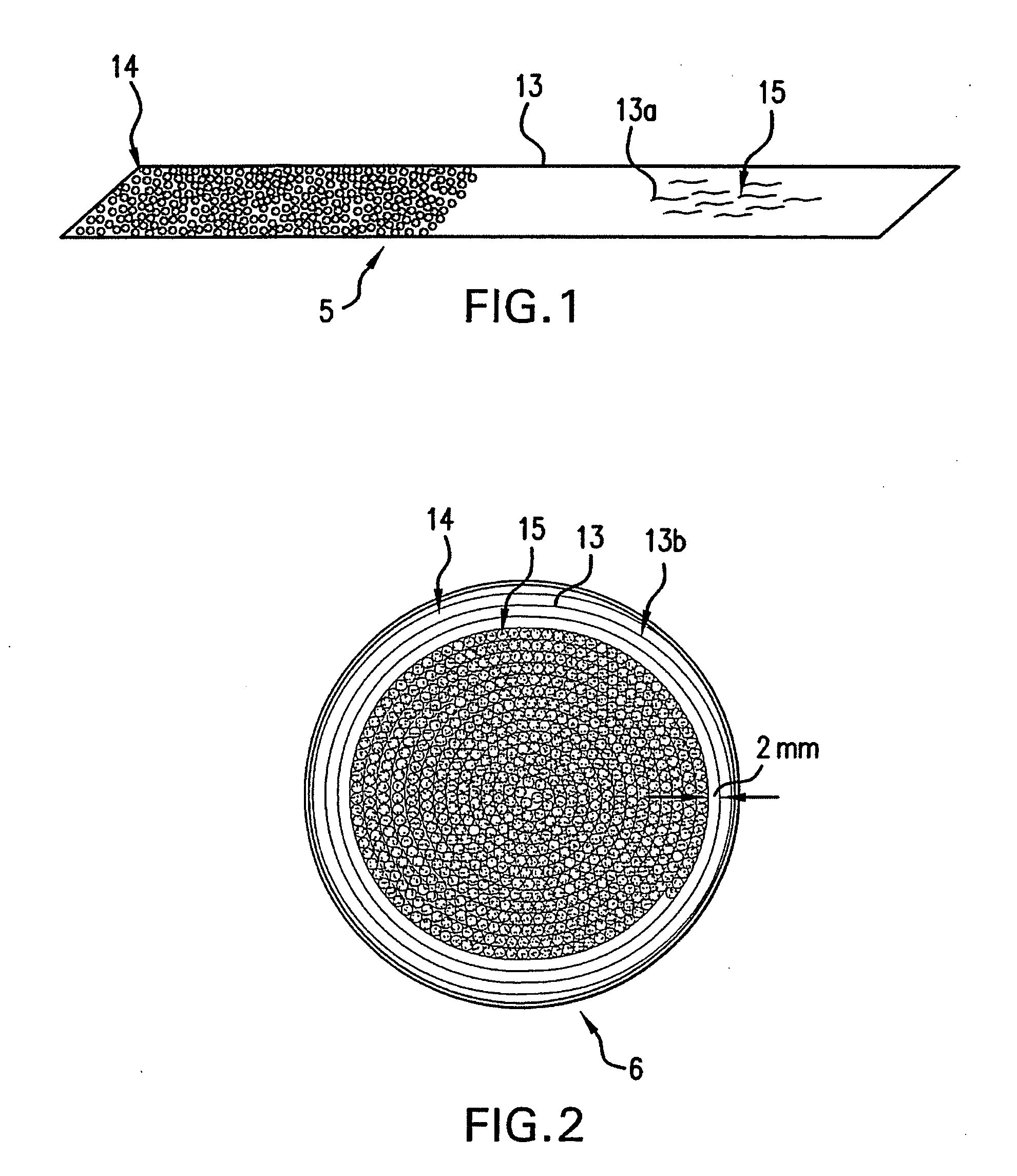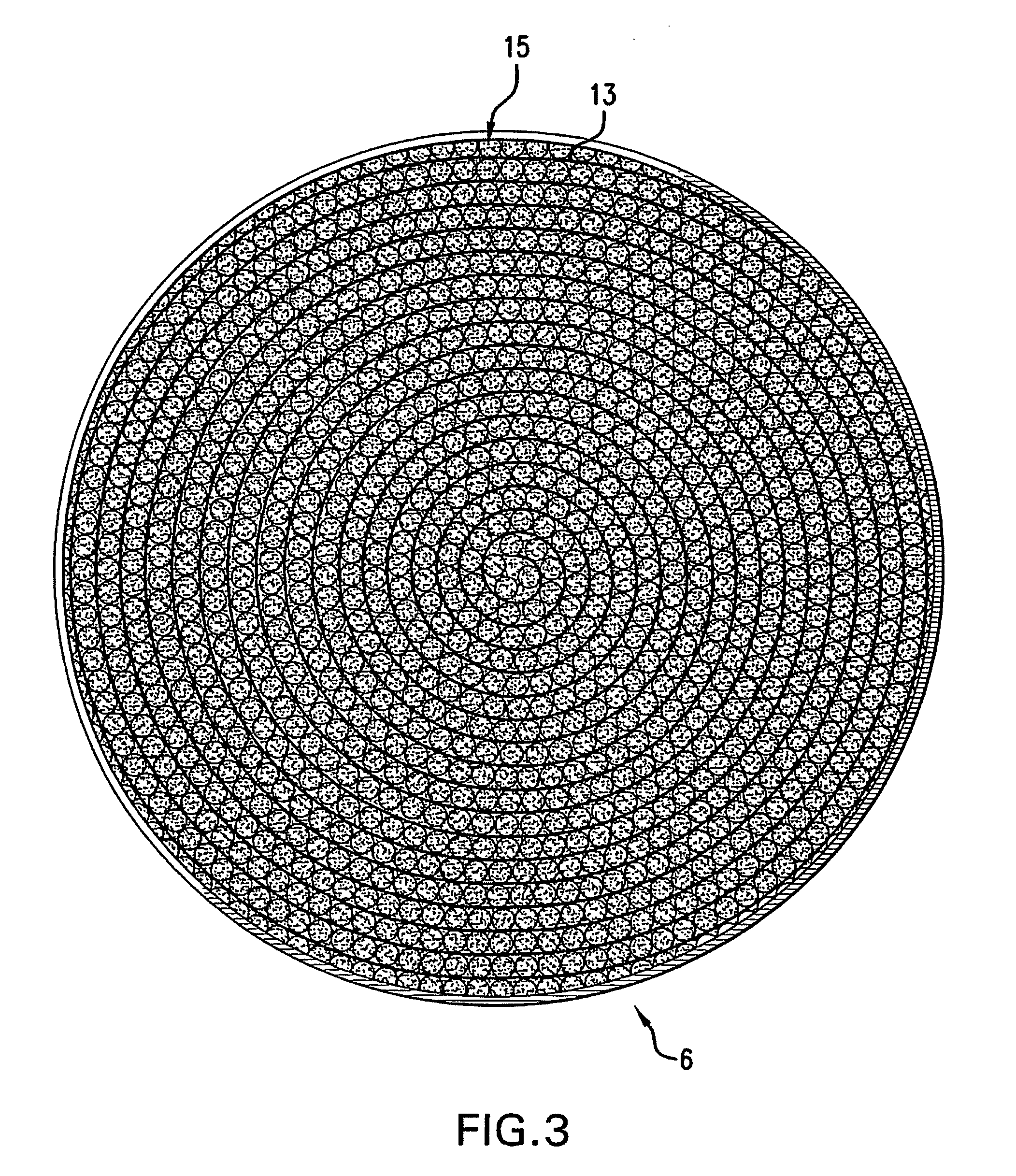Shaped composite adsorbent material
a composite adsorbent and fluid stream technology, applied in the field of composite adsorbents or devices, can solve the problems of inability to recognize a shaped composite solution to the problem, inability to treat acc substrates, and inability to meet the requirements of adsorption, so as to maximize the surface area of the particulate adsorbent material, improve the access to the particulate material, and increase the accessibility of the adsorbent material
- Summary
- Abstract
- Description
- Claims
- Application Information
AI Technical Summary
Benefits of technology
Problems solved by technology
Method used
Image
Examples
example 1
[0030] An adsorbent device was created by pressing the adhesive side of a strip of ½″ SCOTCH® Magic™ Tape 810 into a tray of granular carbon and completely coating the adhesive with the carbon. The substrate tape measured 113 linear inches. The carbon was a U.S. 20×45 mesh BLP granular activated carbon from Calgon Carbon Corporation having an apparent density of 0.540 g / cc. The coated composite was wound into a tight spiral measuring about 3.5 inches in diameter to create a spiral adsorbent composite. The spiral was enclosed in an air permeable, disc-shaped prototype housing 18, as shown for example in FIG. 6. Housing 18 has air permeable faces 19 on both the front and back sides of the disc. Tests were conducted on this prototype unit. The carbon density of the spiral composite was 0.181 g / cc. This density was selected to optimize a balance between increasing access to the carbon while maintaining a high volumetric carbon density. As a result faster adsorption kinetics were obtaine...
example 2
[0036] In another experiment, the pressure drop was measured for a constant mass of 8.93 grams of carbon in the forms of a spiral composite, and a packed bed of bulk carbon. The spiral composite opens up the carbon bed and immobilizes the carbon in space thereby lowering the pressure drop across the bed. The bulk carbon bed was prepared to have a bed depth of 1.7 cm while the spiral composite spread the same amount of carbon out to a bed depth of 3.0 cm. This test demonstrated that a result of spreading the carbon bed out provided a significant reduction in the pressure drop of the bed. The test was conducted using 80 ppm butane in an air stream at 50% relative humidity and 0.6 m / sec linear velocity. The pressure drop of the packed bed of carbon was 1.010 inches of water while the pressure drop with the spiral construction bed was 0.095 inches of water. This represents a 10 fold decrease in the pressure drop which is desirable for many applications. The lower pressure drop is desira...
example 3
[0037] The flow rate of water through a water column was used to demonstrate the reduced pressure drop of the current invention with a liquid system. Using only gravity, a 9 inch water column was allowed to drain through the carbon bed and out of the column. Each column contained 238 grams of activated carbon. The column with the packed bed drained in 22.2 seconds and the column with the spiral composite carbon bed drained in 17.5 seconds. The result is a 21% increase in flow rate. This rate was achieved without addition of any pumps.
PUM
| Property | Measurement | Unit |
|---|---|---|
| width | aaaaa | aaaaa |
| diameter | aaaaa | aaaaa |
| diameter | aaaaa | aaaaa |
Abstract
Description
Claims
Application Information
 Login to View More
Login to View More - R&D
- Intellectual Property
- Life Sciences
- Materials
- Tech Scout
- Unparalleled Data Quality
- Higher Quality Content
- 60% Fewer Hallucinations
Browse by: Latest US Patents, China's latest patents, Technical Efficacy Thesaurus, Application Domain, Technology Topic, Popular Technical Reports.
© 2025 PatSnap. All rights reserved.Legal|Privacy policy|Modern Slavery Act Transparency Statement|Sitemap|About US| Contact US: help@patsnap.com



